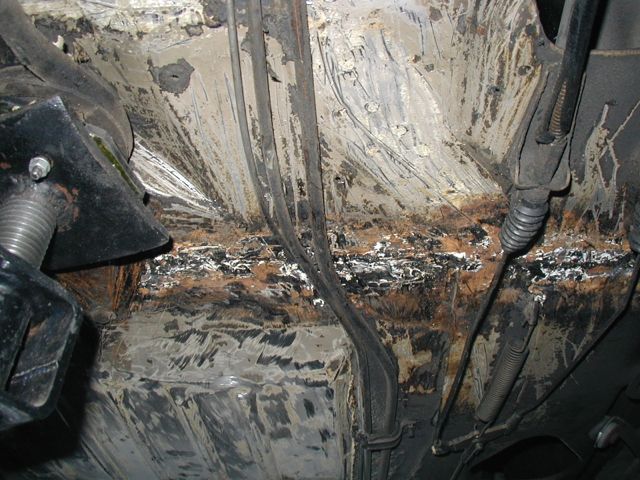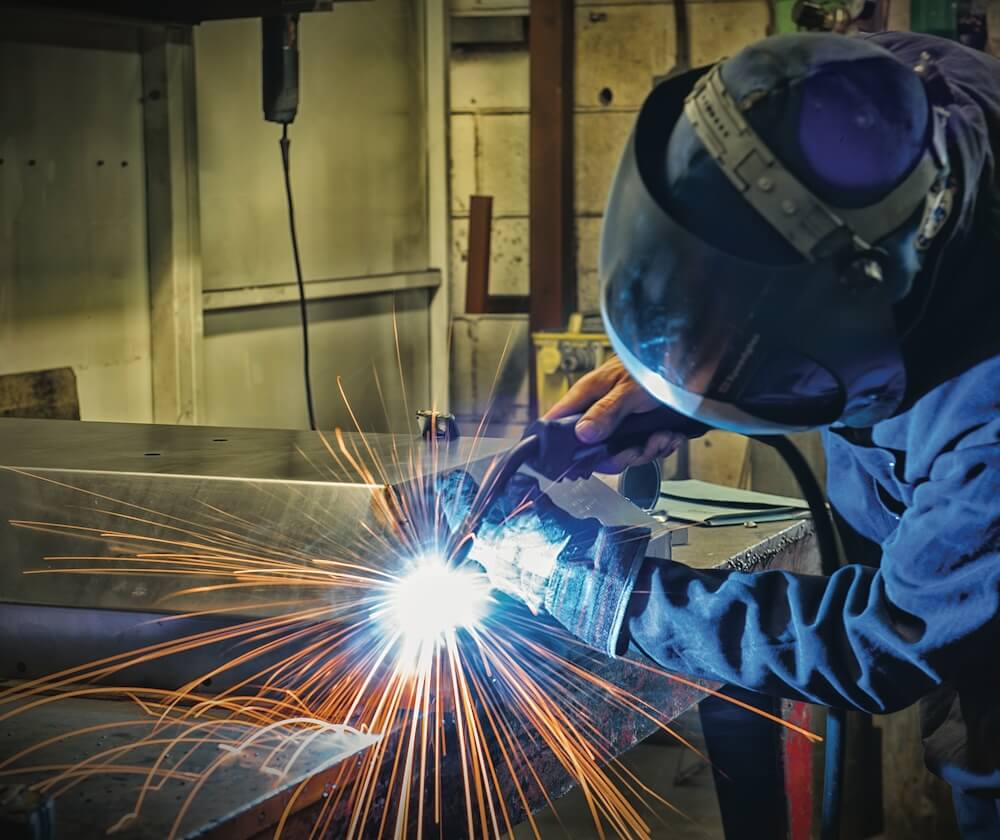Why welds crack and how Montana Mobile Welding and Repair avoids them
Wiki Article
Usual Welding Repair Service Issues and How to Address Them Properly
Welding fixings often encounter a series of problems that can endanger the honesty of the final item. Typical issues consist of inadequate infiltration, porosity, and imbalance, among others. Each flaw offers distinct challenges that require certain techniques for resolution. Understanding these concerns is crucial for welders aiming to boost their abilities and outcomes. This discussion will check out these usual welding fixing concerns and reliable methods to address them.Inadequate Infiltration
Poor penetration happens when the weld steel stops working to fully fuse with the base product, leading to weak joints and prospective structural failings. This problem frequently originates from not enough heat input, wrong electrode angle, or improper welding speed. Welders may experience poor infiltration due to a mistake of the needed specifications for a certain material density or kind. Furthermore, contamination on the base material's surface can impede reliable bonding, worsening the problem. To attend to poor infiltration, welders should ensure appropriate settings on their equipment and keep a clean job surface. Routine inspection of welds is advised to determine any kind of shortages early, allowing for timely adjustments and the prevention of compromised structural stability in bonded settings up.Porosity
Porosity is an usual defect in bonded joints that manifests as tiny gas bubbles entraped within the weld metal. This defect can jeopardize the honesty of the weld, bring about minimized strength and prospective failure under stress and anxiety. Montana Mobile Welding and Repair Welding. Porosity commonly occurs from contamination, dampness, or incorrect welding methods, which permit gases to leave right into the liquified weld swimming pool. To address porosity, welders ought to ensure proper surface area preparation, keep a tidy workplace, and use suitable welding criteria. Additionally, choosing the appropriate filler material and protecting gas can minimize gas entrapment. Normal examination and testing of welds can assist recognize porosity early, guaranteeing timely rehabilitative activities are taken, thus protecting the high quality and dependability of the welded structureMisalignment
Imbalance in welding can occur from different variables, including incorrect configuration and thermal development. Recognizing the root creates is crucial for effective resolution. Numerous correction techniques are available to straighten parts and guarantee architectural stability.Root causes of Misalignment
Welding imbalance typically originates from a range of underlying issues that can compromise architectural stability. One primary reason is incorrect fit-up of elements prior to welding, which can lead to voids and unequal surface areas. Variations in thermal development during the welding procedure can likewise cause distortion, especially if the materials being joined have different coefficients of growth. In addition, insufficient fixturing and securing might stop working to hold components safely in position, bring about movement throughout welding. Poorly conserved tools, including welding machines and devices, might present inconsistencies in the weld bead, additional adding to misalignment. Operator mistake, stemming from not enough training or experience, can likewise play a significant function in producing misaligned welds.
Adjustment Techniques Available
Resolving imbalance efficiently calls for a combination of restorative methods customized to the certain issues available. One common method is the usage of fixtures or jigs to hold components in the right position during welding, making sure consistent positioning. Additionally, pre-heating the products can aid minimize distortion and enhance fit-up. For substantial imbalance, mechanical adjustment methods, such as using hydraulic jacks or clamps, can be employed to deal with the setting prior to welding. Post-weld warm treatment may likewise be required to alleviate stresses triggered by imbalance. Mindful evaluation and modification throughout the setup stage can stop imbalance concerns from becoming considerable issues, advertising a smoother welding process and boosting overall architectural stability.Distortion
Distortion is a typical challenge in welding that can emerge from numerous elements, consisting of irregular cooling and heating. Understanding the reasons of distortion is important for carrying out reliable avoidance methods. Resolving this problem not only boosts architectural stability yet additionally improves the general quality of the weld.Causes of Distortion
When subjected to the extreme warmth of welding, materials often undertake modifications that can bring about distortion. This sensation mostly arises from thermal expansion and tightening throughout the welding procedure. As the weld area warms up, the product expands; upon cooling, it gets, which can produce internal stresses. Additionally, unequal heating throughout a workpiece can worsen these tensions, leading to warping or flexing. The sort of product also plays a significant role; metals with differing thermal conductivity and coefficients of growth may react in a different way, causing unforeseeable distortions. Bad joint layout and poor fixturing can add to misalignment during welding, raising the likelihood of distortion. Comprehending these causes is necessary for effective welding repair and avoidance methods.Avoidance Techniques
Effective avoidance techniques for distortion throughout welding concentrate on regulating heat input and guaranteeing appropriate joint layout. Keeping a regular heat input assists to decrease thermal development and contraction, which can cause distortion. Utilizing techniques such as preheating the workpiece can also reduce the temperature level gradient, advertising uniform heating. Furthermore, selecting proper joint designs, such as T-joints or lap joints, can boost security and decrease tension concentrations. Applying correct fixturing to protect the workpieces in area further help in maintaining placement throughout the welding procedure. Lastly, staggered welding series can distribute warm extra equally, stopping local distortion. By applying these techniques, welders can substantially decrease the chance of distortion and improve the total quality of their welds.Cracking
Splitting is a common issue run into in welding repair work, often arising from different aspects such as incorrect air conditioning rates, product selection, or poor joint preparation. The occurrence of fractures can greatly endanger the stability of the weld, leading to potential failures during procedure. To address this concern, welders have to first evaluate the source, making certain that materials are suitable and properly picked for the details application. In addition, controlling the cooling rate throughout the welding process is vital; rapid air conditioning can cause stress and anxiety and result in cracking. Correct joint style and preparation likewise contribute to decreasing the threat. Carrying out these approaches can enhance weld high quality and resilience, inevitably lowering the possibility of fracturing in finished weldments.
Incomplete Blend
A significant concern in welding repair work is insufficient combination, which occurs when the weld metal does not sufficiently bond with the base material or previous weld passes - Montana Mobile Welding and Repair Belgrade Welding. This defect can cause weaknesses in the joint, potentially jeopardizing the integrity of the welded structure. Elements adding to incomplete fusion consist of inadequate warm input, improper welding strategy, and contamination of the surfaces being joined. To address this issue properly, welders should assure proper pre-weld cleaning and surface preparation, along with change their welding specifications to achieve sufficient infiltration and fusion. Regular assessment during the welding procedure can also aid recognize incomplete blend early, permitting timely restorative actions to boost the total quality of the weldOverheating
While welding fixings can boost structural integrity, overheating offers a substantial obstacle that can result in material deterioration. Extreme warm during welding can modify the mechanical residential or commercial properties of metals, leading to minimized toughness, enhanced brittleness, and bending. This phenomenon is especially crucial in high-stress applications where architectural dependability is vital. Recognizing getting too hot can include aesthetic inspections for staining or distortion, along with monitoring temperature throughout the welding process. To minimize the dangers connected with overheating, welders need to use ideal strategies, such as managing warmth input, changing traveling speed, and using suitable filler materials. Additionally, implementing pre- and post-weld heat treatments can help bring back product buildings and boost the overall high quality of the fixing, guaranteeing long-term performance and safety.Often Asked Inquiries
What Are the Common Signs of a Welding Defect?

How Can I Check My Welds for High quality?
To examine welds for high quality, one can use aesthetic examinations, ultrasonic screening, and radiographic techniques. Each method guarantees structural honesty, determines problems, and confirms adherence to defined standards, eventually boosting the reliability of the welded joints.What Safety and security Precautions Should I Take While Welding?
When welding, one must prioritize safety and security by using suitable personal safety devices, making certain correct air flow, safeguarding combustible products away, keeping a clean work space, and recognizing surroundings to avoid accidents and injuries.Can I Repair a Weld Without Remodeling the Entire Joint?
Repairing a weld without remodeling the whole joint is feasible, relying on the damages (Belgrade Welding). Methods such as grinding, including filler product, or using a welding procedure can properly resolve certain flaws while protecting the surrounding structureWhat Tools Are Necessary for Efficient Welding Services?
Important tools for efficient welding repairs include a welding maker, wire brush, mill, protective gear, clamps, and filler materials. Each device plays an important duty in ensuring high quality and safety and security during the repair service process. Porosity generally arises from contamination, dampness, or inappropriate welding techniques, which enable gases to get get more info away into the molten weld swimming pool. Inadequately kept tools, including welding devices and tools, may introduce disparities in the weld grain, further contributing to imbalance. When subjected to the extreme heat of welding, materials usually undergo adjustments that can lead to distortion. Cracking is a typical issue encountered in welding repairs, commonly resulting from different variables such as improper cooling rates, material option, or inadequate joint preparation. A considerable concern in welding repair services is incomplete blend, which takes place when the weld steel does not sufficiently bond with the base material or previous weld passes.Report this wiki page